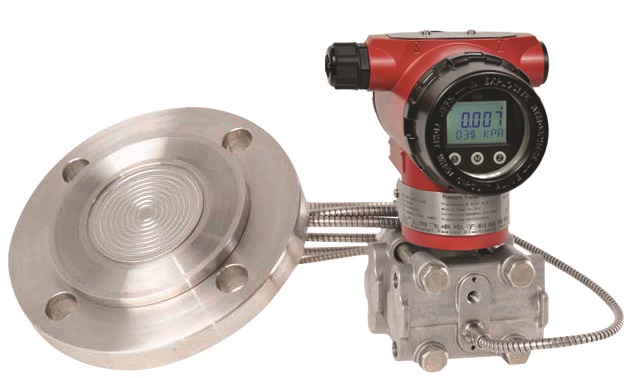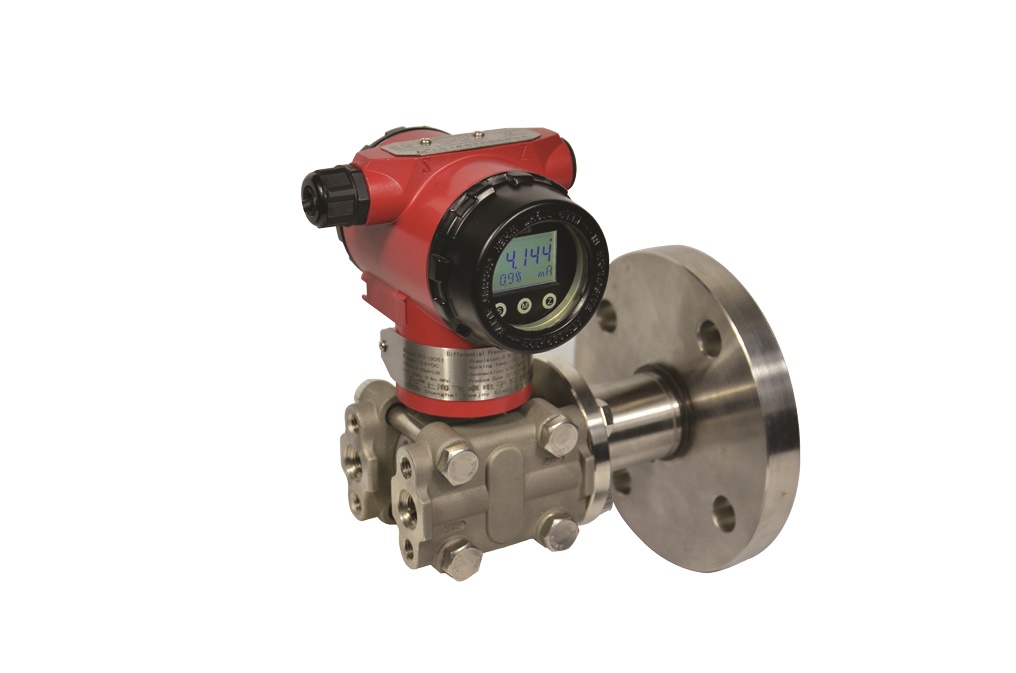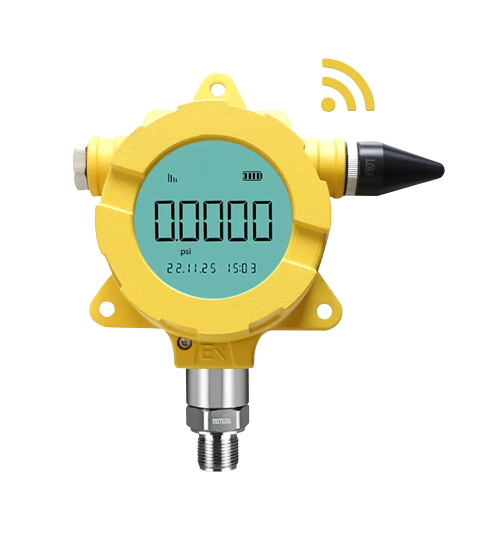
Differential Pressure Instrumentation
Pressure Instrumentation like a differential pressure transmitter measures the difference in pressure between two points and converts this into an electrical signal for monitoring and control. Furthermore, It's essential in applications like flow measurement, filter monitoring, and level measurement in pressurized tanks. Additionally, key features include high accuracy, robust construction, and compatibility with industrial control systems via 4-20 mA signals. Moreover, these transmitters ensure efficient and safe operations by providing precise differential pressure data, aiding in process optimization and equipment protection. Finally, regular calibration and maintenance are necessary to maintain their performance and reliability.

Pressure Transmitters
A pressure transmitter is an essential device in industrial applications, designed to measure fluid pressure and convert it into an electrical signal for monitoring and control. Furthermore, key features include high accuracy, robust construction, and compatibility with control systems via 4-20 mA output signals. Moreover, pressure Instrumentation like these devices is crucial in industries like oil and gas, chemical processing, and water treatment. In addition, they ensure safe and efficient operations by providing precise pressure data, which is vital for automating processes and preventing equipment damage. Finally, regular maintenance and calibration are necessary to maintain their reliability and accuracy over time.

Pressure Level Transmitters
A differential pressure level transmitter measures the level of a liquid in a tank by determining the pressure difference between the liquid's surface and a reference point. In addition, this device is essential in industries like oil and gas, chemical processing, and water treatment. Also, it provides accurate level measurements, ensuring precise process control and safety. Furthermore, key features include high accuracy and durable construction. In addition, the compatibility with control systems via 4-20 mA signals. Also, these transmitters are crucial for optimizing processes and preventing overflows or dry conditions. Finally, regular maintenance of Pressure Instrumentation and calibration are required. This is to ensure their continued reliability and accuracy.

Wireless Pressure Instrumentation
Wireless pressure transmitter measures fluid pressure and transmits the data wirelessly to a remote monitoring system. In addition, it is essential in industries like oil and gas, chemical processing, and water management, where wired connections are impractical or costly. Furthermore, key features of this Pressure Instrumentation include high accuracy, battery-powered operation, and robust construction for harsh environments. Also, wireless communication protocols like Zigbee, LoRa, or Wi-Fi enable real-time data transmission. Furthermore, this enhances flexibility and reducing installation costs. In addition, these transmitters ensure efficient process monitoring and control. Moreover, it contributes to safety and operational efficiency. Finally, regular maintenance and battery replacement are necessary to maintain their performance and reliability.
Types of Pressure Instrumentation: In-Depth Description
Pressure transmitters are essential instruments used in various industries to measure and transmit pressure data for monitoring and control purposes. Moreover, we will explore four specific types. They are pressure transmitters and differential pressure transmitters. Also, differential pressure level transmitters, and wireless pressure transmitters. Finally, each type has its unique features, applications, and benefits.
Pressure Instrumentation
Overview of a pressure transmitter is a device that measures the pressure of a fluid (liquid or gas) and converts this pressure into an electrical signal, which can be read and analyzed by control systems. In addition, they are widely used in industries such as oil and gas, chemical processing, water treatment, and manufacturing. Furthermore, Key Features that include Measurement Range which is where Pressure transmitters can measure a wide range of pressures, from very low to very high. Also, Accuracy that includes High accuracy, typically within ±0.1% to ±0.5% of the full-scale range. In addition, you will have Output Signal used commonly a 4-20 mA current loop, but can also include 0-10 V, HART, Profibus, or Modbus. Also, Construction which is made from robust materials like stainless steel or Hastelloy to withstand harsh environments.
Environmental Ratings like IP65 to IP68 ratings for dust and water resistance. Moreover, Process Control which monitoring and controlling pressure in pipelines and vessels. In addition, Safety which ensures safe operation by preventing overpressure conditions. Efficiency that Optimizes industrial processes by providing accurate pressure data. Finally, you have Maintenance, with regular maintenance involves visual inspections, cleaning, checking electrical connections, and calibrating the device to ensure accuracy.
Differential Pressure
Overview: A differential pressure transmitter measures the difference in pressure between two points and converts this difference into an electrical signal. This type of transmitter is crucial for applications requiring precise measurement of pressure differences. Key Features that include Measurement of Pressure Difference which Provides accurate measurements of pressure differences, which can be critical for specific applications. Also, High Accuracy that offers high accuracy, within ±0.1% to ±0.5% of the full-scale range. Additionally, you have an Output Signal which is Standard output signals include 4-20 mA, with options for digital communication protocols.
The Construction is built to withstand harsh conditions with materials like stainless steel or Hastelloy. In addition, we have Environmental Ratings which has a rating for IP65 to IP68 for protection against dust and water ingress. Also, Applications which include Flow Measurement which are used with orifice plates, venturi tubes, or flow nozzles to measure fluid flow. Furthermore, you have Filter Monitoring which detects pressure drops across filters to determine when maintenance or replacement is needed. Level Measurement which measures liquid levels in pressurized tanks by determining the pressure difference between the top and bottom of the tank. Finally, maintenance that includes regular inspections, cleaning, checking for leaks, verifying electrical connections, and calibrating to ensure accuracy.
Differential Pressure Level Instrumentation
Differential pressure level transmitters are specialized devices that measure the level of a liquid in a tank by determining the pressure difference between the liquid’s surface and a reference point. Finally, they are crucial in applications where accurate level measurement in pressurized environments is required. In addition, Key Features which include Measurement of Liquid Levels which provides accurate level measurements based on pressure differences.
Also, High Accuracy which offers high accuracy within ±0.1% to ±0.5% of the full-scale range. In addition, you have Output Signals which are common output signals include 4-20 mA, with digital communication options like HART or Profibus. The Construction is of Robust materials such as stainless steel or Hastelloy to withstand harsh conditions. Finally, you have Environmental Ratings which has ratings IP65 to IP68 for protection against dust and water.
Wireless Pressure Instrumentation
Overview of the Wireless pressure transmitters measure fluid pressure and transmit the data wirelessly to remote monitoring and control systems. In addition, they are ideal for applications where wired connections are impractical or expensive. Also, the Key Features include Wireless Communication which uses protocols like Zigbee, LoRa, or Wi-Fi for data transmission. In addition, Battery-Powered that operates on batteries, making installation flexible and reducing wiring costs. Also, High Accuracy: Maintains high accuracy, typically within ±0.1% to ±0.5% of the full-scale range. Additionally, the Output Signal Transmits data wirelessly to receivers or gateways that integrate with control systems. Finally, the Construction is made from durable materials to withstand harsh environments.
Other considerations are the Environmental Ratings including IP65 to IP68 for dust and water protection. Furthermore, Application include Remote Monitoring which is Ideal for monitoring pressure in remote or hard-to-reach locations. In addition, the Cost Savings reduces installation costs by eliminating the need for extensive wiring. In addition, the flexibility is easily reconfigurable and scalable for various applications in industries like oil and gas, water treatment, and chemical processing. In addition, Maintenance involves regular battery replacement, inspecting the device for damage or wear, verifying wireless communication, and ensuring accurate pressure readings.
Summary
Pressure Transmitters measure fluid pressure. Furthermore, the key features include wide measurement range, high accuracy, robust construction. In addition, applications: Process control, safety, efficiency.
Differential Pressure Transmitters measure pressure difference between two points.
Furthermore, the key features include precise differential measurement, high accuracy, durable construction. Also, applications include flow measurement, filter monitoring, level measurement.
Pressure Level Transmitter measure liquid level by determining pressure difference. Other key features include accurate level measurement, high accuracy, robust construction. Also, applications which include tank level measurement, process control and safety. Furthermore, it measures fluid pressure and transmit data wirelessly. In addition, key features, which include wireless communication, battery-powered, high accuracy. Finally, applications are for remote monitoring, cost savings, flexibility.
Conclusion of Pressure Instrumentation
Each type of pressure transmitter serves specific applications, offering unique features to meet the demands of various industries. Finally, regular maintenance and proper calibration are crucial for ensuring their reliability and accuracy, ultimately contributing to the safe and efficient operation of industrial processes.
